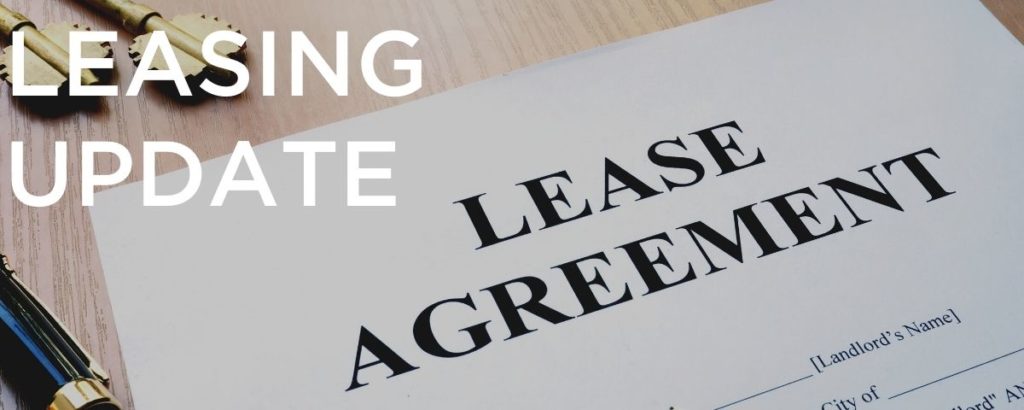
Effective Date for Private Companies and Most Nonprofit Organizations
In February 2016, the FASB issued Accounting Standard Update 2016-02 Leases (Topic 842) after many years of deliberation. The new accounting standard fundamentally changes accounting for leases, with the biggest impact on lessees – entities that lease property, equipment, and other assets. The new standard has been in effect for publicly traded companies since 2019. The FASB delayed the effective date for private companies and most nonprofit organizations to fiscal years beginning after December 15, 2021 (calendar year 2022).
The primary purpose of the new lease accounting standard is to bring all leases onto the balance sheet. Under previous guidance (or “legacy GAAP”), a leased asset and liability are recorded on the balance sheet only when the lease meets the stringent criteria of a capital lease. Capital leases are essentially recorded as though the leased asset is a financed purchase of an asset under legacy GAAP. The new guidance requires entities to record a lease liability for all future noncancelable lease payments with terms exceeding twelve months.
Lease Classification – Operating versus Finance
The criteria for classifying a lease as an operating lease versus a finance lease under Topic 842 is similar to legacy GAAP (Topic 840) classification of operating versus capital leases. Instead of the “bright line” 4-factor test under legacy GAAP (Topic 840), there are five criteria which are very similar to the capital lease test under Topic 840. A lease should be accounted for as a finance lease if any one of these criteria are met:
- Ownership of the asset transfers at the end of the lease term
- The lease agreement contains an option to purchase which is reasonably certain to be exercised (commonly referred to as a “bargain purchase option,” for example, $1.00 buy-out)
- The lease term is for the majority of the asset’s remaining economic life
- The present value of the lease payments is greater than the fair value of the leased asset
- The specialized nature of leased asset results in no expectation of an alternative use after the lease term
Unless a lease meets one of those criteria, it is to be accounted for as an operating lease.
Lessee Accounting for Operating Leases
Under legacy GAAP (Topic 840), entities record operating leases by simply recognizing lease expense over the lease term, on a straight-line basis if the lease payment fluctuates over the lease term. Future lease payments are disclosed in the notes to the financial statements. The commitment to make payments under noncancelable lease agreements is often referred to as an “off balance sheet” liability.
Under the new lease accounting standard (Topic 842), at lease inception, lessees are required to record a lease obligation as a liability on the balance sheet for the present value of the sum of all required lease payments over the full term of the lease, including renewal options that are expected to be exercised. An intangible “Right of Use” (ROU) asset is recorded on the balance sheet. The impact to the balance sheet increases with the amount of the lease payment and the length of the term. Leases of real estate (operating facilities, warehouses, office space) will likely result in the most significant impact to a lessee’s balance sheet.
The impacts on the income statement and statement of cash flows are relatively minor. The lease liability is reduced with payments made, and the ROU asset is amortized. For operating leases, lease expense is recorded, rather than amortization or interest expense.
Lessee Accounting for Finance Leases
Legacy GAAP requires entities to record the leased asset and a capital lease obligation as if the leased asset was being acquired when a lease agreement meets the criteria for a capital lease under Topic 840. The leased asset could be recorded as an intangible leased asset, but typically it is not differentiated from purchased assets. Certain disclosures are required for capital leases, including disclosing the carrying value of the assets under lease as well as future gross payments and amounts representing implied interest. The leased asset is depreciated or amortized over its estimated useful life, just as if it was purchased, and typically at the end of the capital lease term the lessee does in fact own the asset outright.
Under the new lease accounting standard (Topic 842), at lease inception, a finance lease is recorded in the same manner as an operating lease. On the balance sheet, an intangible ROU asset is recorded along with a lease liability for the present value of future required lease payments. The ROU asset is amortized over the lease term rather than the useful life of the leased asset. If ownership transfers at the end of the lease, any costs are capitalized at that time and depreciated over any remaining useful life of the asset. The lease liability is reduced as payments are made, and imputed interest expenses are recorded.
Implementation and Other Considerations
Lessors – Lessor accounting was not fundamentally changed by the new guidance for lease accounting. Real estate entities and companies that lease equipment or other assets will continue to recognize rental income as earned, much in the same manner as under legacy GAAP (Topic 840). However, lessors should review and evaluate the new guidance to determine any impacts on their financial reporting and disclosure requirements.
Renewal Options and Evergreen Leases – Lease agreements that include renewal terms at lessee or lessor option need to be carefully considered. Management is required to exercise judgment regarding the likelihood of renewal and the terms of future payments. Leases that renew continually and remain in effect until terminated by lessee or lessor, usually with a notification period (referred to as “evergreen” leases) need to be carefully evaluated and an expected term should be estimated. Even a relatively small monthly payment may result in a large lease liability when the term is indefinite and could be estimated at 30 years or more.
Related Party Leases – Leases with related parties need to be evaluated and accounted for in the same manner as leases with unrelated third parties. It is a common practice for private business owners to hold real estate in a separate legal entity from operations, and the operating company leases its facilities from the real estate entity. If the lease term with expected renewals is greater than twelve months, the operating company lessee is required to record the full lease liability and ROU asset on stand-alone financial statements.
Consolidating or Combining Related Lessors – Many private companies have elected not to consolidate related lessor entities as an accounting policy. Generally, the lessor is a variable interest entity (VIE) and the operating company as primary beneficiary consolidates VIEs unless it has opted out for lessors meeting certain criteria. Management and ownership may want to consider changing the accounting policy and presenting consolidated financial statements, eliminating the lease. Management can also consider combining related entities including lessors whether they meet the definition of VIEs. Such a change in accounting policy and financial statement presentation requires careful planning and consideration, as well as consultation with lenders.
Embedded Leases – There may be embedded leases in other contracts even if the word “lease” is not used. Review your existing contractual arrangements for components that include the use of a specific asset where you have control over that asset. Examples include information technology agreements, software-as-a-service and cloud computing arrangements, outsourcing contracts, and use of a supplier’s manufacturing facility or equipment. Imbedded leases are often part of contracts that include service or non-lease elements, and only the payments that relate to the lease component should be included. Any embedded lease payments identified should be disclosed under legacy GAAP for financial statements issued prior to implementation of the new lease accounting standards.
Early Implementation – Early adoption of the new lease accounting standard is permitted. If you decide to implement for 2021, evaluate leases and calculate accounting adjustments now. For comparative financial statements, 2020 amounts need to be adjusted or restated, with any cumulative effect posted as of December 31, 2019. Consider reading the 2019 financial statements of publicly traded companies for examples and disclosure language.
Transition Guidance – While any new leases in the implementation year will obviously fall under the new accounting standard, existing leases need to be evaluated and accounted for under the new lease accounting standard. For operating leases, calculate and record a lease liability and ROU asset as of the beginning of the adoption period or the inception of the lease, whichever is sooner. In other words, all leases existing before the start of the comparative period are to be included.
Next Steps
Take a Lease Inventory – Make a list of all existing leases, summarize the key elements (asset or property description, owner or lessor, payment schedule, lease term, renewal options), and gather relevant supporting documentation (the executed lease agreement, amendments, etc.). The schedule used for financial statement disclosures under legacy GAAP is a good start, but be sure to include auto leases, office equipment leases, and any other leases.
New Leases or Contracts – Consider the impact of lease accounting when entering into a new agreement to buy or lease an asset or entering into a contractual arrangement that could include an embedded lease component.
Loan Covenants – Carefully review loan agreements, bonding agreements, and any other credit agreements. Companies required to maintain certain financial ratios or measurements to remain in compliance with financing agreements, especially measurements of Tangible Net Worth, should review and discuss with their lenders or agents now.
Determine Discount Factor for Present Value of Lease Payments –The lease liability to be recorded is the present value of the payments required. Present value calculations require the use of a discount factor. The new lease accounting standard provides guidance for determining the discount factor to be used. Generally, entities should use the discount rate implicit in the lease. If that rate cannot be readily determined, the lessee should use its incremental borrowing rate, or the interest rate incurred to borrow funds to purchase the asset over a similar term. Private companies may use a risk-free discount rate, but if this option is selected, it must be applied to all leases. The risk-free discount rate is generally lower than the implicit rate or incremental borrowing rate, and if used, would result in a larger lease liability.
Consider Lease Accounting Software – The details of lease accounting under Topic 842 may require more than a simple spreadsheet to calculate and set up the monthly accounting journal entries. Each lease needs to be evaluated. Each ROU asset needs to be amortized in accordance with the standard. Initial direct costs need to be evaluated and properly recorded.

